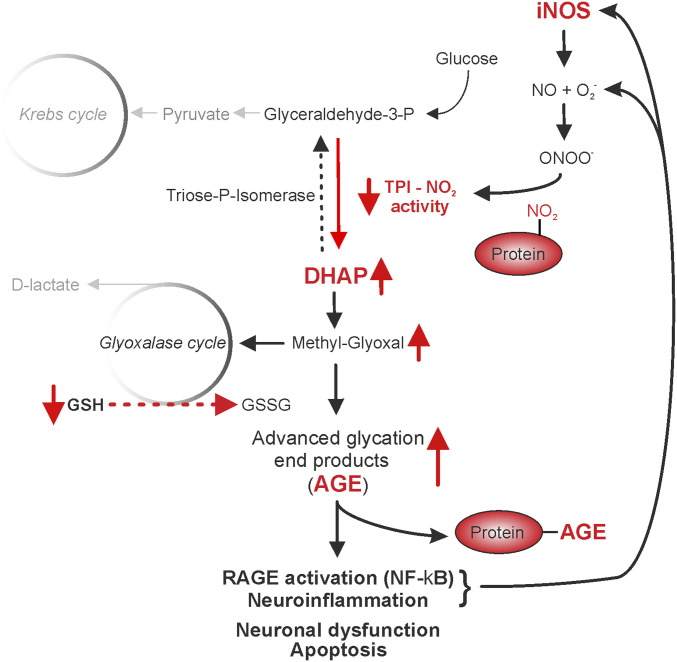Fig. 6.
Representation of the pathways impacted on by excessive protein 3-nitrotyrosination. Glycolysis generates glutaraldehyde-3-phosphate (G3P) that the enzyme triose phosphate isomerase (TPI) uses to form dihydroxyacetone (DHAP) which spontaneously and nonenzymatically decomposes to methylglyoxal. The glyoxalase cycle is the detoxification system by which methylglyoxal is transformed into lactate using glutathione (GSH) as a cofactor. Following activation of iNOS associated with enhanced levels of NO and peroxynitrite, 3-nitrotyrosination of TPI decreases its activity, which leads to an accumulation of DHAP and methylglyoxal. High concentrations of methylglyoxal will overload the clearance mechanism, leading to an accumulation of GSSG and the excessive formation of advanced glycation end-products (AGE) with subsequent activation of the receptor for AGE (RAGE). Under pathological conditions, glycation compromises protein functionality and predisposes proteins to aggregation which further contributes to inflammation and cell dysfunction.

